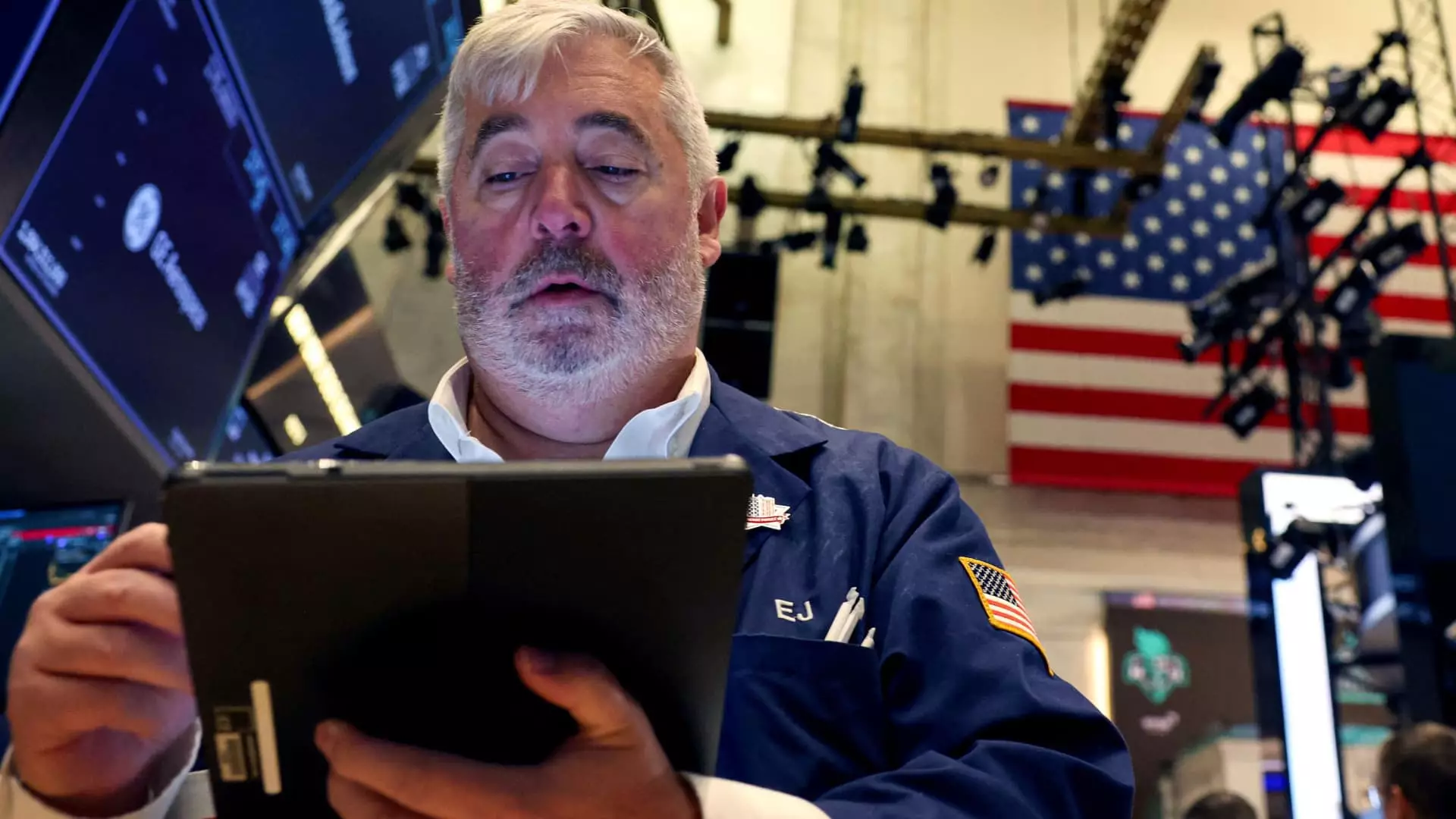In the early hours of trading, Treasury yields experienced a notable increase as investors reacted to the unfolding results of a closely contested presidential election between Vice President Kamala Harris and former President Donald Trump. The 10-year Treasury yield rose sharply by 14 basis points, climbing to 4.431%, marking its highest level since July 2. Similarly, the 2-year Treasury yield saw an uptick of 8 basis points, reaching 4.285%, the highest since July 31. This shift signifies a critical inversion of the traditional bond market relationship, prompting speculation among traders regarding the potential outcome of the election.
As results began to favor Donald Trump, particularly with significant wins projected in key states such as North Carolina and Georgia, Wall Street’s apprehension transformed into active trading decisions. The overall sentiment suggested that a Republican sweep, where the party could seize both Congress and the White House, would likely provoke a substantial rise in bond yields. This expectation is rooted in the prospect of potential tax cuts and tariffs that could expand the fiscal deficit and reignite inflationary pressures on the economy.
Market analysts have long anticipated that a Trump victory could reverberate through the financial landscape, particularly affecting bond prices and yields. Notably, Jeremy Siegel, a finance professor at the Wharton School, conveyed concerns regarding fiscal discipline, or lack thereof, from both leading candidates. Neither Trump nor Harris offered clear responses on how they would maintain fiscal prudence, which raises legitimate concerns among investors about rising national debt levels and the resultant effects on Treasury yields.
Byron Anderson, head of fixed income at Laffer Tengler Investments, observed a notable sell-off in bonds across the yield curve as Trump’s potential victory began to seem more likely. He expressed that the market was reacting strongly to expectations surrounding a Republican leadership, indicating an urgent call from investors for higher yields in exchange for holding government debt. The anticipation of escalating yields transcends party lines, as both candidates seem disinterested in enforcing tight fiscal measures during the campaign, leaving the bond market in a precarious position.
Predictions surrounding Treasury yields oscillate dramatically depending on the electoral outcome. According to Stephanie Roth, the chief economist at Wolfe Research, yields are anticipated to ascend towards 4.5% if Trump secures the presidency, whereas a victory for Harris could see yields retreat towards the 4% threshold. This divergence highlights the intertwined nature of politics and financial markets, where electoral outcomes can materially influence economic conditions.
Amidst these predictions, Siegel mentioned that a divided Congress, regardless of who emerges victorious in the presidential race, could lead to a more favorable fiscal environment for the markets. This scenario would likely mitigate extreme moves in bond yields, as neither party would be able to fully implement their fiscal agenda without compromise.
The ongoing developments come at a critical time as the Federal Reserve prepares for its next interest rate decision. On the horizon is an anticipated quarter-point reduction in rates, which could further complicate the landscape for Treasury yields. The juxtaposition of a potentially declining interest rate environment and rising Treasury yields presents a unique contradiction that investors must consider carefully.
“In light of the current election landscape, it is essential for market participants to recalibrate their strategies,” notes Tim Urbanowicz, head of research at Innovator ETFs. The anticipation of Trump securing the presidency has ignited a wave of investor activity reflecting a broader sentiment of uncertainty, compelling markets to prepare for a tumultuous economic transition.
As the election results unfold, the surge in Treasury yields serves as an acute reminder of the markets’ sensitivity to political developments. Investors must navigate this landscape with caution, acknowledging that bond yields could continue to fluctuate as the implications of the election are fully realized. With financial stability hanging in the balance, the interactions between government policy, investor sentiment, and economic fundamentals will be instrumental in shaping the immediate future of the U.S. economy.

